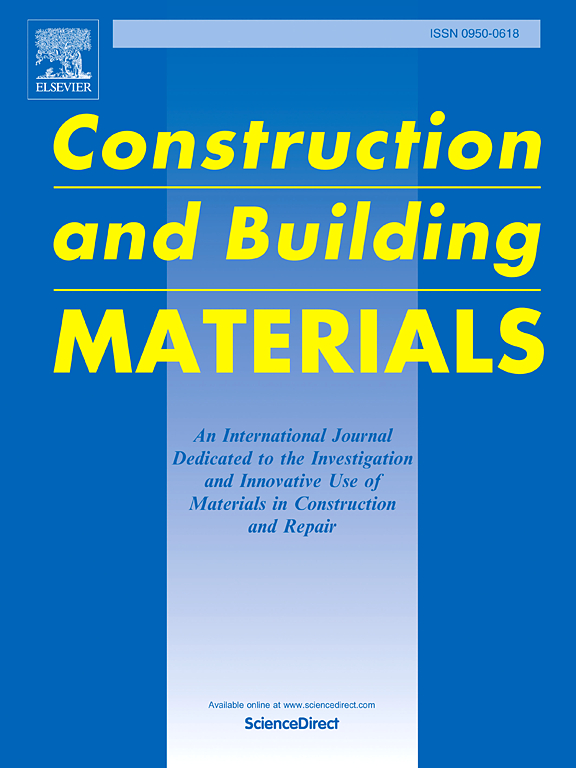Experimental study on the flexural behavior of engineering geopolymer composite and concrete composite beams combined with acoustic emission technology
IF 7.4
1区 工程技术
Q1 CONSTRUCTION & BUILDING TECHNOLOGY
引用次数: 0
Abstract
Engineered geopolymer composite (EGC) is an emerging and environmentally friendly cementitious material that shows great potential for application. The purpose of this study is to reveal the effect mechanism of EGC on the bending performance of composite beams. This is achieved by comparing and analyzing the bending failure characteristics of EGC and OPC composite beams with different EGC layer thicknesses and reinforcement ratios. The acoustic emission (AE) technique was introduced to monitor the damage characteristics of the composite beams during flexural loading, and the influence of diverse parameters on the failure mode, cracking and yield strength, energy dissipation capacity, and AE characteristics was assessed comprehensively in this study. The results demonstrate that the EGC layer in the composite beam exhibits excellent crack control under bending load, presenting a multi-cracking characteristic. The capabilities for load-bearing and energy dissipation of the beam are enhanced as the thickness of the EGC layer and reinforcement ratio increase. In the damage process of EGC, the AE amplitude follows a power-law distribution, and the distribution of AE events in the EGC layer is denser than that in the OPC layer. The theoretical calculation model of the bearing capacity established in this study has extensive applicability and can accurately predict the cracking behavior. This study provides scientific evidence for improving the flexural performance of concrete structures using EGC and has promoting significance for broadening the application scope of composite materials.
求助全文
约1分钟内获得全文
求助全文
来源期刊

Construction and Building Materials
工程技术-材料科学:综合
CiteScore
13.80
自引率
21.60%
发文量
3632
审稿时长
82 days
期刊介绍:
Construction and Building Materials offers an international platform for sharing innovative and original research and development in the realm of construction and building materials, along with their practical applications in new projects and repair practices. The journal publishes a diverse array of pioneering research and application papers, detailing laboratory investigations and, to a limited extent, numerical analyses or reports on full-scale projects. Multi-part papers are discouraged.
Additionally, Construction and Building Materials features comprehensive case studies and insightful review articles that contribute to new insights in the field. Our focus is on papers related to construction materials, excluding those on structural engineering, geotechnics, and unbound highway layers. Covered materials and technologies encompass cement, concrete reinforcement, bricks and mortars, additives, corrosion technology, ceramics, timber, steel, polymers, glass fibers, recycled materials, bamboo, rammed earth, non-conventional building materials, bituminous materials, and applications in railway materials.
 求助内容:
求助内容: 应助结果提醒方式:
应助结果提醒方式:


